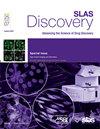Optimized scaffold-free human 3D adipose tissue organoid culture for obesity and disease modeling
IF 2.7
4区 生物学
Q2 BIOCHEMICAL RESEARCH METHODS
引用次数: 0
Abstract
Obesity and type 2 diabetes (T2D) are strongly linked to abnormal adipocyte metabolism and adipose tissue (AT) dysfunction. However, existing adipose tissue models have limitations, particularly in the stable culture of fat cells that maintain physiologically relevant phenotypes, hindering a deeper understanding of adipocyte biology and the molecular mechanisms behind differentiation. Current model systems fail to fully replicate In vivo metabolism, posing challenges in adipose tissue research. Three-dimensional (3D) AT organoids, although promising, present significant handling challenges during long-term culture. As adipocytes maturate and accumulate fat, they develop organotypic characteristics, increasing the buoyancy effect, which causes the organoids to oscillate, complicating culture manipulation and rendering multiple handling steps difficult.
Due to these challenges, most adipose spheroid and organoid models are scaffold-based, despite many cell types' ability to secrete extracellular matrix (ECM) components and self-assemble into aggregates. Scaffold-free 3D organoids have been less explored. To address the shortage of affordable and reliable AT models, we utilized magnetic bioprinting technology to develop a human-derived 3D model of adipose tissue. This system incorporates a magnetic holder that restrains organoids, preventing them from floating and minimizing the risk of loss during manipulation.
This study outlines a protocol for generating In vitro AT-derived organoid using 3D magnetic bioprinting, with a focus on manufacturing, culturing, and assessing the morpho-functional characteristics of late-stage AT organoids. Magnetic bioprinting allows for the replication of tissue structure and function In vitro without the risk of organoid loss, making it an ideal method for high-throughput AT organoid culture. Additionally, the combination of 3D scaffold-free manufacturing with In vitro disease modeling offers a valuable tool for discovering treatments for metabolic diseases such as obesity and T2D.
优化的无支架人体三维脂肪组织类器官培养用于肥胖和疾病建模。
肥胖和2型糖尿病(T2D)与脂肪细胞代谢异常和脂肪组织(AT)功能障碍密切相关。然而,现有的脂肪组织模型存在局限性,特别是在维持生理相关表型的脂肪细胞的稳定培养方面,阻碍了对脂肪细胞生物学和分化背后的分子机制的更深入理解。目前的模型系统不能完全复制体内代谢,这给脂肪研究带来了挑战。三维(3D) AT类器官虽然很有前途,但在长期培养过程中存在重大的处理挑战。随着脂肪细胞的成熟和脂肪的积累,它们形成了器官型特征,增加了浮力效应,导致类器官振荡,使培养操作复杂化,使多个处理步骤变得困难。由于这些挑战,尽管许多细胞类型能够分泌细胞外基质(ECM)成分并自组装成聚集体,但大多数脂肪球体模型都是基于支架的。对无支架的3D类器官的探索较少。为了解决价格合理且可靠的AT模型短缺的问题,我们利用磁性生物打印技术开发了人体来源的脂肪组织3D模型。该系统包含一个磁性支架,可以抑制类器官,防止它们漂浮,并最大限度地降低操作过程中丢失的风险。本研究概述了一种使用3D磁性生物打印技术生成体外AT衍生类器官的方案,重点是制造、培养和评估晚期AT类器官的形态功能特征。磁性生物打印允许在体外复制组织结构和功能,而没有类器官损失的风险,使其成为高通量AT类器官培养的理想方法。此外,3D无支架制造与体外疾病建模的结合为发现代谢性疾病(如肥胖和T2D)的治疗方法提供了有价值的工具。
本文章由计算机程序翻译,如有差异,请以英文原文为准。
求助全文
约1分钟内获得全文
求助全文
来源期刊

SLAS Discovery
Chemistry-Analytical Chemistry
CiteScore
7.00
自引率
3.20%
发文量
58
审稿时长
39 days
期刊介绍:
Advancing Life Sciences R&D: SLAS Discovery reports how scientists develop and utilize novel technologies and/or approaches to provide and characterize chemical and biological tools to understand and treat human disease.
SLAS Discovery is a peer-reviewed journal that publishes scientific reports that enable and improve target validation, evaluate current drug discovery technologies, provide novel research tools, and incorporate research approaches that enhance depth of knowledge and drug discovery success.
SLAS Discovery emphasizes scientific and technical advances in target identification/validation (including chemical probes, RNA silencing, gene editing technologies); biomarker discovery; assay development; virtual, medium- or high-throughput screening (biochemical and biological, biophysical, phenotypic, toxicological, ADME); lead generation/optimization; chemical biology; and informatics (data analysis, image analysis, statistics, bio- and chemo-informatics). Review articles on target biology, new paradigms in drug discovery and advances in drug discovery technologies.
SLAS Discovery is of particular interest to those involved in analytical chemistry, applied microbiology, automation, biochemistry, bioengineering, biomedical optics, biotechnology, bioinformatics, cell biology, DNA science and technology, genetics, information technology, medicinal chemistry, molecular biology, natural products chemistry, organic chemistry, pharmacology, spectroscopy, and toxicology.
SLAS Discovery is a member of the Committee on Publication Ethics (COPE) and was published previously (1996-2016) as the Journal of Biomolecular Screening (JBS).
 求助内容:
求助内容: 应助结果提醒方式:
应助结果提醒方式:


